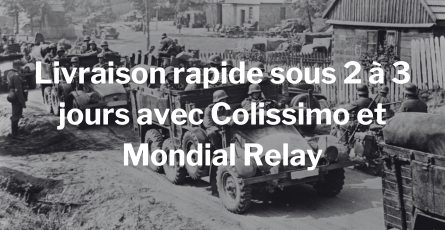

Banner

Banner




92nd Infantry Division Patch.
 Garanties sécurité
Garanties sécurité
(à modifier dans le module "Réassurance")
 Politique de livraison
Politique de livraison
(à modifier dans le module "Réassurance")
 Politique retours
Politique retours
(à modifier dans le module "Réassurance")
92nd Infantry Division Patch. original, WW2.
The 370th Regimental Combat Team, attached to the 1st Armored Division, arrived in Naples, Italy, 1 August 1944 and entered combat on 24th. It participated in the crossing of the Arno River, the occupation of Lucca and the penetration of the Gothic Line. Enemy resistance was negligible in its area. As Task Force 92, elements of the 92nd attacked on the Ligurian coastal flank toward Massa, 5 October. By the 12th, the slight gains achieved were lost to counterattacks. On 13 October, the remainder of the division concentrated for patrol activities. Elements of the 92nd moved to the Serchio sector, 3 November 1944, and advanced in the Serchio River Valley against light resistance, but the attempt to capture Castelnuovo di Garfagnana did not succeed. Patrol activities continued until 26 December when the enemy attacked, forcing units of the 92nd to withdraw. The attack ended on 28 December. The attacking forces were mainly from the Republic of Salò's Fascist Army, the 4th Italian "Monte Rosa" Alpine Division (four battalions), with the support of three German battalions. Aside from patrols and reconnaissance, units of the 92nd attacked enemy forces in the Serchio sector from 5–8 February 1945, advancing against the 1st "Italia" Bersaglieri Division, but enemy counterattacks nullified all 92nd Division advances.
After continuing poor combat performance including many instances of unauthorized withdrawals upon meeting the enemy, low morale and malingering, the 92nd Infantry Division was considered of inferior quality both by German and U.S. commands and fit for only defensive roles. Things deteriorated to the point that the division was withdrawn from the lines and rebuilt in early 1945 with the removal of the 366th Infantry Regiment (formed into two engineer general service regiments) and the addition of the 473rd and 442nd Infantry Regiments. Many historians have begun to reevaluate the combat record of the 92nd Division as contemporaneous reports of its honorable performance have continued to surface. Numerous veterans of the division believed that the reports of poor performance were motivated by racist sentiments present within the senior officer ranks. Even as evidence mounts in support of the division's honorable conduct, some still seek to suppress these facts.[14] The famous and highly decorated Nisei 442nd, made up of Japanese Americans, was withdrawn from the fighting in France to bolster the division's combat effectiveness. The 365th and 371st Infantry Regiments became training and security regiments, respectively, and were stationed in rear areas, although still nominally assigned to the division.[citation needed]
Soldiers of the 92nd Infantry Division with a captured German soldier.
On 1 April, the 370th RCT and the attached 442nd Regimental Combat Team (Nisei) attacked the Ligurian coastal sector and drove rapidly north against light opposition from the German 148th Infantry Division, which was supported only by Italian coastal units. The 370th took over the Serchio sector and pursued the retreating enemy from 18 April until the collapse of all enemy forces on 29 April 1945. Elements of the 92nd Division entered La Spezia and Genoa on 27th and took over selected towns along the Ligurian coast until the enemy surrendered on 2 May 1945.
Reference: G1E218
Reference: F2E489
Reference: F1E467
Reference: U1E391
Reference: U2U190
Reference: F2E463

92nd Infantry Division Patch.
check_circle
check_circle